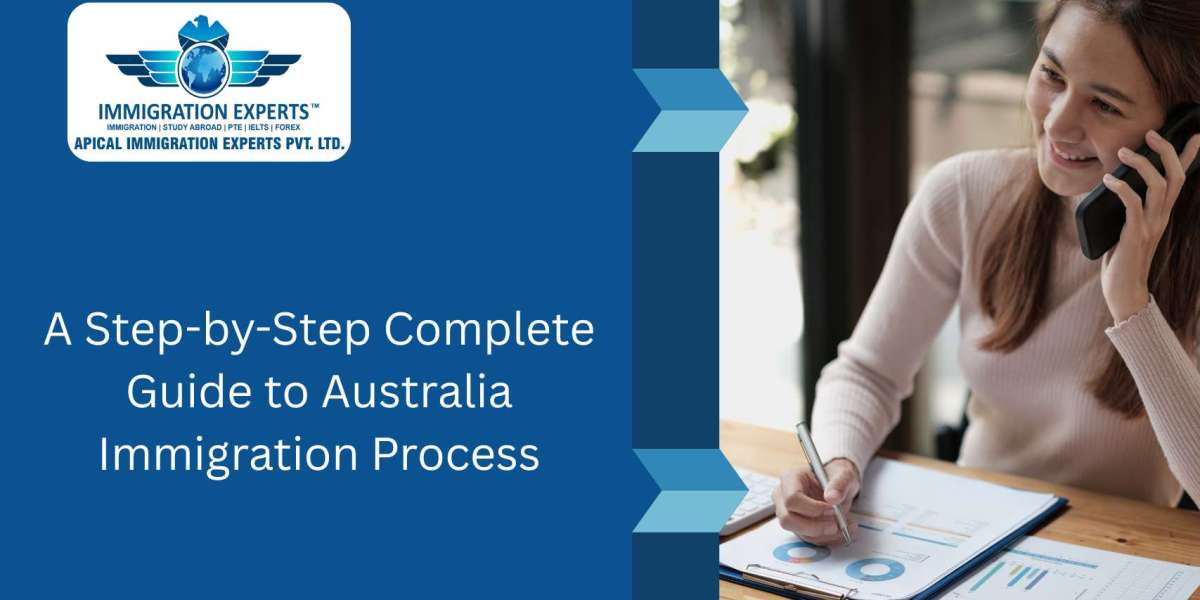Australia is one of the top destinations for people seeking better career opportunities, high-quality education, and an overall excellent standard of living. From its vibrant cities and diverse culture to strong job markets and social benefits, it's no surprise that thousands of people apply to move here each year.
But the immigration process can be complex — especially if you're doing it alone or without the right information. That’s why we’ve created this detailed Australia immigration process guide, breaking down every major step so you can prepare with clarity and confidence.
Why Immigrate to Australia?
Before diving into the steps, let’s quickly cover why Australia is such a popular destination:
- Robust economy with plenty of job opportunities in IT, engineering, healthcare, and trades.
- High quality of life, world-class healthcare, and public services.
- Multicultural society with a friendly, inclusive atmosphere.
- Access to top universities and education systems.
- Pathways to permanent residency and citizenship.
Now let’s break down the entire immigration process into manageable steps.
Step 1: Understand the Types of Australian Visas
Australia offers multiple visa categories, but the most common immigration pathways include:
- Skilled Migration Visas
- Subclass 189 (Skilled Independent Visa)
- Subclass 190 (Skilled Nominated Visa)
- Subclass 491 (Skilled Work Regional Visa)
- Employer-Sponsored Visas
- Subclass 482 (Temporary Skill Shortage)
- Subclass 186 (Employer Nomination Scheme)
- Business and Investment Visas
- Subclass 188 (Business Innovation and Investment)
- Subclass 888 (Permanent Business Innovation and Investment)
- Student and Graduate Visas
- Subclass 500 (Student Visa)
- Subclass 485 (Temporary Graduate Visa)
- Family and Partner Visas
- Subclass 820/801 (Partner Visa)
- Subclass 300 (Prospective Marriage Visa)
- Subclass 143 (Contributory Parent Visa)
Tip: Use the Australian Immigration Visa Finder to see which visas you may be eligible for.
Step 2: Check Your Eligibility
Each visa has specific criteria. For skilled migration, for example, you’ll need:
- A relevant occupation on the Skilled Occupation List (SOL).
- A skills assessment by a recognized assessing authority.
- Age under 45 (for most skilled visas).
- English language proficiency (usually IELTS, PTE, or TOEFL).
- Health and character checks.
If you're applying for a partner or family visa, you’ll need to prove your relationship, financial support, and meet sponsorship requirements.
Step 3: Skill Assessment
If you're applying under the skilled stream, the skills assessment is a must. Here's how to get started:
- Identify the assessing authority for your occupation (e.g., ACS for IT professionals, Engineers Australia for engineers, VETASSESS for general occupations).
- Submit required documents like degrees, work experience letters, CV/resume, and English test results.
- Pay the processing fee.
- Wait for the outcome (can take several weeks to months).
Step 4: Expression of Interest (EOI)
After receiving a positive skills assessment, you need to lodge an EOI via SkillSelect. This is not a visa application but a declaration of your interest to migrate.
- Choose your visa subclass (189, 190, 491).
- Provide details like your age, education, work experience, English test results, and skills assessment.
- You’ll be given a points score (minimum 65 points required).
- If eligible, you may receive an invitation to apply (ITA) in a subsequent round.
Step 5: Get State Nomination (if applicable)
For visas like Subclass 190 or 491, you need nomination from an Australian state or territory. This involves:
- Submitting an application to the state government.
- Meeting specific state criteria (occupation, residency, job offers, etc.).
- Receiving a nomination, which boosts your EOI points.
Step 6: Apply for the Visa
Once you receive your invitation to apply, you’ll have 60 days to submit your full visa application online through ImmiAccount.
Documents you’ll need:
- Passport and identification
- Educational qualifications
- Employment references
- Skills assessment report
- English test results
- Health exams and police clearance
- Proof of relationship (for family/partner visas)
Important: Pay close attention to accuracy and completeness to avoid delays.
Step 7: Undergo Medical and Police Checks
You must pass health and character checks before a visa is granted:
- Medical exam by a panel physician (registered with the Australian embassy).
- Police clearance from all countries you’ve lived in for over 12 months in the past 10 years.
These are mandatory for most long-term visas.
Step 8: Wait for Visa Decision
Processing times vary depending on the visa type:
- Subclass 189: ~6 to 9 months
- Subclass 190/491: ~6 to 12 months
- Partner visas: ~12 to 24 months
You can track your application through ImmiAccount.
Step 9: Receive Visa Grant and Prepare to Move
Once approved, you’ll receive your visa grant letter. This includes your visa conditions, start date, and travel validity.
What to Do Next:
- Book your flight and make travel arrangements.
- Find temporary accommodation and begin house-hunting.
- Research job opportunities and networking events.
- Familiarize yourself with healthcare (Medicare), banking, transportation, and taxation in Australia.
- Consider hiring a migration agent or relocation expert for help settling in.
Step 10: Transition to Permanent Residency or Citizenship
Many temporary visas (like 491, 482, 485) lead to Permanent Residency (PR) after meeting eligibility.
Permanent residency allows:
- Live, work, and study in Australia indefinitely
- Access to Medicare and other benefits
- Sponsorship rights for family
- A pathway to Australian citizenship (after four years)
Final Thoughts:
Immigrating to Australia is a big decision and a life-changing one. While the process can seem complex, breaking it down step by step makes it manageable and more approachable.
Whether you’re a skilled professional, a student, or planning to join a loved one, there’s a pathway for you. Take the time to understand the requirements, gather your documents, and be prepared for each phase of the journey.
And remember — persistence pays off. Many have walked this road before you and now call Australia home. With the right planning and a little patience, you can too.



